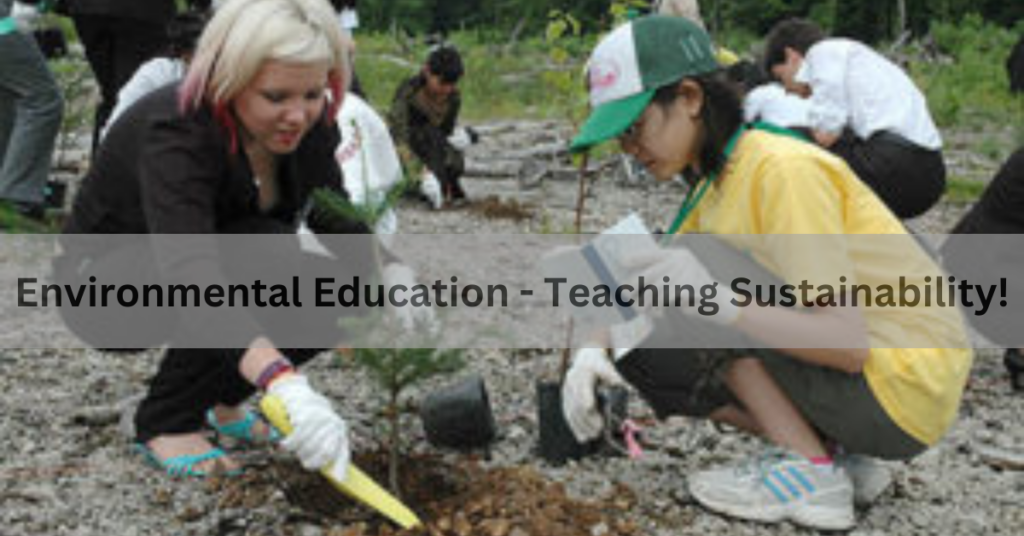Environmental education plays a crucial role in shaping a sustainable future. By integrating sustainability into the curriculum, educators can empower students with the knowledge, skills, and values needed to address environmental challenges. This article explores various strategies and approaches for teaching sustainability, highlighting the importance of environmental education in fostering a more sustainable world.
The Importance of Environmental Education
Environmental education is essential for raising awareness about the pressing environmental issues facing our planet. It equips students with the knowledge to understand complex environmental problems and the skills to develop and implement solutions. By fostering a sense of responsibility and stewardship, environmental education encourages individuals to take action towards a more sustainable future.
Integrating Sustainability into the Curriculum
Integrating sustainability into the curriculum involves embedding environmental concepts and principles across various subjects. This interdisciplinary approach ensures that students understand the interconnectedness of ecological, social, and economic systems. Subjects such as science, geography, and social studies can include lessons on climate change, biodiversity, and sustainable development. Additionally, arts and humanities can explore the cultural and ethical dimensions of sustainability, fostering a holistic understanding of the subject.
Experiential Learning and Outdoor Education
Experiential learning and outdoor education are powerful tools for teaching sustainability. Hands-on activities, such as gardening, composting, and water testing, provide students with practical skills and a deeper connection to the natural world. Field trips to nature reserves, farms, and renewable energy facilities offer firsthand experiences of sustainable practices in action. By engaging with their environment, students develop a sense of place and a commitment to protecting it.
Project-Based Learning and Community Engagement
Project-based learning (PBL) encourages students to apply their knowledge to real-world problems, fostering critical thinking and problem-solving skills. Sustainability projects can involve researching local environmental issues, developing action plans, and collaborating with community organizations. PBL promotes active citizenship and empowers students to make a tangible impact in their communities. By addressing local challenges, students gain a sense of agency and understand the broader implications of their actions.
Utilizing Technology and Digital Resources
Technology and digital resources offer innovative ways to teach sustainability. Online platforms, educational apps, and virtual simulations provide interactive and engaging learning experiences. For example, students can use digital tools to model climate scenarios, track energy consumption, and design sustainable cities. Virtual field trips and webinars with environmental experts broaden students’ perspectives and connect them with global sustainability initiatives. By leveraging technology, educators can enhance environmental education and reach a wider audience.
Promoting Critical Thinking and Systems Thinking
Critical thinking and systems thinking are essential for understanding the complexity of environmental issues and developing effective solutions. Environmental education should encourage students to question assumptions, evaluate evidence, and consider multiple perspectives. Systems thinking involves recognizing the interdependencies within ecological and human systems, promoting holistic and integrative approaches to sustainability. By fostering these skills, educators prepare students to navigate the complexities of environmental challenges and contribute to sustainable solutions.
Fostering Sustainable Behaviors and Mindsets
Fostering sustainable behaviors and mindsets is a key goal of environmental education. This involves cultivating values such as empathy, respect for nature, and a sense of responsibility for future generations. Educators can model sustainable practices, such as reducing waste, conserving energy, and promoting biodiversity, within the school environment. Encouraging students to adopt sustainable habits in their daily lives, such as recycling, using public transport, and supporting ethical products, reinforces the importance of individual actions in achieving broader sustainability goals.
Collaborating with Stakeholders and Building Partnerships
Collaboration with stakeholders and building partnerships enhance the effectiveness of environmental education. Schools can work with local governments, non-profit organizations, and businesses to provide resources, expertise, and opportunities for students. Community involvement in environmental projects fosters a sense of collective responsibility and strengthens social ties. Partnerships with higher education institutions and research organizations can support curriculum development and offer professional development for educators. By collaborating with diverse stakeholders, environmental education initiatives can achieve greater impact and sustainability.
Addressing Global Environmental Challenges
Environmental education should address global environmental challenges such as climate change, deforestation, and plastic pollution. By understanding these issues’ global nature and local impacts, students can appreciate the interconnectedness of environmental systems and the need for collective action. Educators can incorporate case studies, documentaries, and guest speakers to highlight global sustainability efforts and inspire students to contribute to global solutions. Teaching about international agreements, such as the Paris Agreement and the Sustainable Development Goals (SDGs), provides a framework for understanding and addressing global environmental challenges.
Conclusion
Environmental education is a cornerstone of a sustainable future, equipping students with the knowledge, skills, and values to address environmental challenges. Integrating sustainability into the curriculum, promoting experiential and project-based learning, and leveraging technology are key strategies for effective environmental education. By fostering critical thinking, sustainable behaviors, and collaboration, educators can empower the next generation to lead the way towards a more sustainable and resilient world. Embrace the transformative power of environmental education to inspire change and build a sustainable future for all.

















